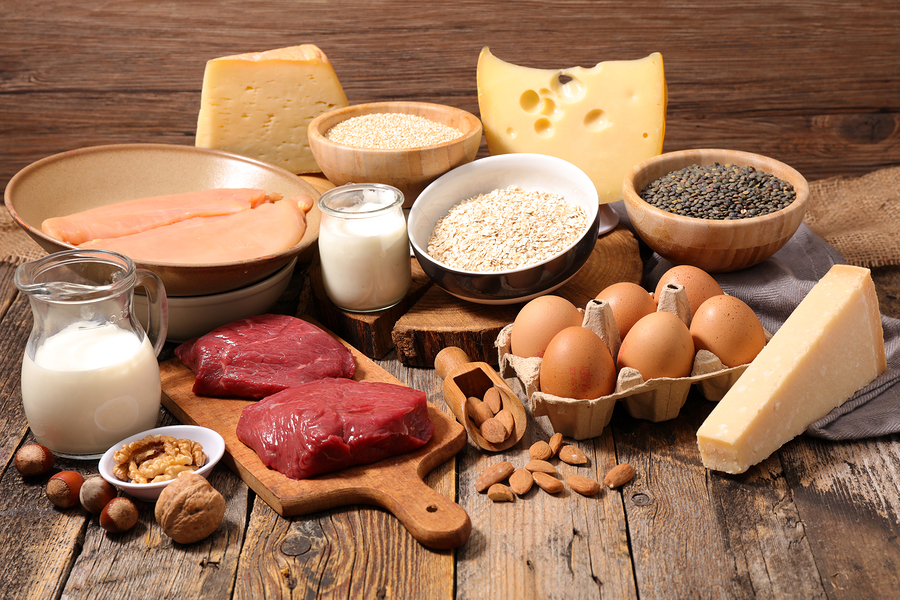Losing muscle and strength is like having our bank account slowly drained. Initially it’s too subtle to notice, though it can be well under way by the time we’re 60.
It’s called sarcopenia, and eventually it results in a loss of capacity and increased risk of falls, frailty and disability. There’s also a strong correlation between the health of our muscles and our general health.
The process of sarcopenia speeds up during times of inactivity, which can occur through illness, injury, recuperation from surgery, or just challenging patches of life when our usual routine falls away.
Researchers at McMaster University in Canada have highlighted the danger of periods of inactivity for older people and the need to get back to exercise as soon as possible. Otherwise, we might never regain the muscle we lose.
While it’s important to wait until we’re well enough and to ease into it, as soon as it’s safe and sensible, we need to get moving.
Something else we can do during periods of downtime is to ensure we’re eating enough protein.
Older bodies aren’t as efficient as they used to be in using dietary protein for muscle growth and repair. The same goes for exercise — our muscles don’t respond in quite the way they once did.
But this is exacerbated when we don’t eat enough protein to start with.
In addition, it’s common to eat most of our protein at one meal — usually dinner, though some people make lunch their main meal. The point is it doesn’t work to concentrate our protein intake into one meal, regardless of which one it is.
In a post in May I referred to the glucose problem that occurs when breakfast consists of mostly carbohydrates such as cereal or toast.
But this kind of meal is also often too low in protein to provide our muscles (or bones or any other tissue) with the stimulation they need.
It’s considered that we need to eat about 1.0 to 1.5g of protein per kg of body weight each day to stimulate muscle growth and delay sarcopenia. For most of us, one gram per kilogram of our weight is probably a reasonable goal, and the only way to achieve this is to include protein in each meal.
Protein, of course, occurs in a range of foods — from animal-based sources such as meat, poultry, seafood, eggs, yoghurt and cheese, to non-animal sources including nuts and seeds, legumes and even grain to a small extent.
Here are a few figures on protein content of foods provided by dietitian Joanna McMillan. You can search online for information on other foods.
Eggs: 6g protein each
Lean meat, fish, poultry: about 27–34g per 100g cooked
Yoghurt: 12g per 200g yoghurt
Cheese: 8g per 30g cheese
Nuts and seeds – 5-8g per 30g or ¼ cup
Lentils: 10g per 100g cooked
Rolled oats: 5g per 40g or ½ cup
Quinoa: 8g per cup (or 190g) cooked
Brown rice: 5g per cup (or 185g) cooked
Wholegrain bread: 5g per slice
Labels on products such as yoghurt are also handy for working this out.
Protein supplements are another option. Getting protein from whole foods should be a priority because these have other nutritional benefits. But where it’s hard to eat enough, a supplement can help.
As we get older that’s worth considering, especially given a lot of us probably eat less than we used to.
The advice from researchers is to choose ‘high quality’ protein, i.e. protein that provides all nine amino acids, and is well digested and used by the body.
Plant protein doesn’t contain them all so people who prefer a more vegetarian-style diet need to do their homework to ensure they’re getting the full complement by eating a variety of foods.
One amino acid has especially been linked to muscle retention — leucine. Whey protein contains high levels of it (vegan options such as pea protein have considerably less). Other foods high in leucine include chicken, red meat, tuna, firm tofu, milk, ricotta cheese, nuts and seeds, and eggs.
As far as exercise goes, resistance training tops the list. It’s important not to slip into thinking that as we get older a bit of pottering in the garden and a stroll with the dog is enough, because those are unlikely to build muscle.
Even avid exercisers might not carry enough muscle tissue, especially if they’re lightly built.
Former New York Times health writer Jane Brody is in her early 80s. At age 77, although she was a regular walker, cyclist and swimmer, she was diagnosed with sarcopenia. Her exercise was largely aerobic and not muscle-building enough for a small older woman, especially one whose diet was low in protein.
Unfortunately, there’s not enough education of women through middle-age and menopause about the importance of building and maintaining muscle, and too many of us come out the other side with no understanding of that.
We’re surprised by diagnoses such as osteoporosis and can be convinced that a drug will be the answer. While drugs can encourage thicker bone, they do nothing for the strength of the muscles, tendons and ligaments around our bones.
Once we’re in the later stages of life, if we have sarcopenia we’re at high risk of falling, and when that happens we’re likely to sustain a fracture, bone drug or no bone drug.
The message we all need to get is that muscle mass and strength are crucial to staying healthy and independent as we get older. And the formula is high quality protein at each meal plus strength-building exercise.
Photo Source: Bigstock

